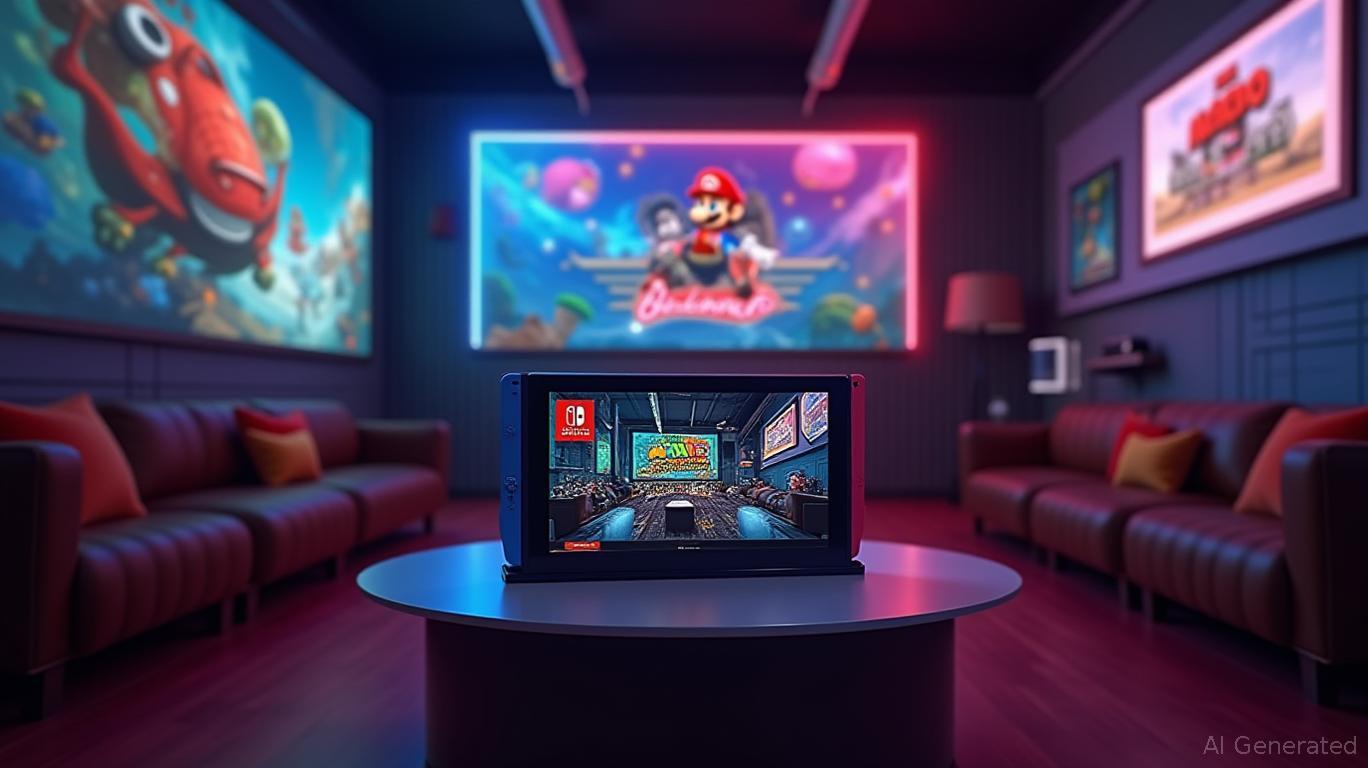Nintendo's Switch 2 Surge: Can Long-Term Fundamentals Outlast the Euphoria?
The Nintendo Switch 2, released on June 5, 2025, has ignited a firestorm of excitement in both gaming culture and financial markets. The console's record-breaking sales—3.5 million units globally in its first four days and 1.1 million in the U.S. during its launch week—have propelled Nintendo's stock to dizzying heights. However, as investors scramble to capitalize on the short-term euphoria, a critical question emerges: Can the company's long-term fundamentals sustain this momentum, or are risks lurking beneath the surface?

The Short-Term Euphoria: A Stock on Fire
Nintendo's shares have surged by 46% year-to-date as of June 2025, adding approximately $39 billion to its market cap. This rally is directly tied to the Switch 2's blistering sales, which outpaced even the original Switch's debut. The new console's $400 price tag—$150 higher than the 2017 model—has not deterred buyers, a testament to its hybrid design and backward compatibility.
The stock's trajectory reflects pent-up demand, as many consumers delayed purchases of older Switch models in anticipation of the Switch 2. This delay contributed to a 30% drop in Nintendo's fiscal 2024 sales (ending March 2024), but the rebound in fiscal 2025 is projected to hit ¥1.9 trillion ($13.1 billion), a 63% year-over-year jump.
The Long-Term Fundamental Challenge: Valuation and Risks
While the Switch 2's success is undeniable, Nintendo's stock now trades at a premium valuation. Its trailing P/E ratio of nearly 50 and a forward P/E of 46 are significantly higher than its historical averages. For context, the company's trailing P/E averaged around 30 in 2022, before the Switch 2 hype began.
Analysts warn that these multiples may not be justified unless Nintendo can sustain extraordinary growth. Consider the following risks:
1. Economic Uncertainty: The U.S. market, which accounts for 35%-40% of Switch shipments, faces potential tariff hikes. Consoles are manufactured in Vietnam, exposing Nintendo to geopolitical and trade policy risks.
2. Supply Chain Constraints: Despite Nintendo's efforts to mitigate scalping, shortages have already emerged. Retailers report struggling to restock units, raising concerns about fulfillment capacity as demand peaks.
3. Software Dependency: Hardware sales alone won't drive long-term value. Nintendo's success hinges on its ability to maintain a robust software pipeline, including AAA titles like The Legend of Zelda: Tears of the Kingdom and Pokémon Scarlet and Violet.
The Brand Advantage: Why Nintendo Still Has Legs
Nintendo's portfolio of iconic franchises—Super Mario, Zelda, Pokémon—remains unmatched in the gaming industry. Cross-media synergies, such as the record-breaking Super Mario Bros. Movie, and partnerships with theme parks like Universal Studios amplify its brand power.
The Switch 2's hybrid design also offers a unique value proposition in a market dominated by pure consoles (PlayStation, Xbox) and mobile gaming. Its portability and backward compatibility could extend its lifecycle, much like the original Switch, which sold over 152 million units since 2017.
Investment Considerations: Buy, Hold, or Proceed with Caution?
The Bull Case: Nintendo's stock is a bet on its unmatched IP and the Switch 2's potential to redefine hybrid gaming. Analysts at Morningstar note that the console's first-week sales already account for 20% of its fiscal 2025 shipment target of 15 million units—a figure many believe is conservative.
The Bear Case: The stock's elevated valuation leaves little room for error. A slowdown in sales growth, a U.S. recession, or a misstep in software releases could trigger a sharp correction. The Motley Fool warns that the stock's current price assumes perfection in execution—a high bar for any company.
Final Analysis: A Cautionary Optimism
Nintendo's Switch 2 is undeniably a hit, and its brand strength ensures long-term relevance. However, investors must weigh the risks against the rewards. At current valuations, the stock appears overly optimistic about sustaining rapid growth in an increasingly competitive and economically uncertain landscape.
Investment Advice:
- Existing Holders: Consider taking partial profits if the stock continues to climb, but retain a core position for the long term.
- New Investors: Proceed with caution. The Switch 2's success is a given, but the stock's premium price demands patience. A pullback to a P/E below 40 could present a better entry point.
In the end, Nintendo's story is one of innovation and resilience. Yet, even legends can falter if overvalued expectations collide with reality. The Switch 2's legacy will be written not just in sales figures, but in how Nintendo navigates the high-wire act between short-term hype and long-term fundamentals.
The data will tell the tale. For now, investors are right to celebrate—but also wise to remember that markets are rarely kind to overpriced optimism.

Comments
No comments yet